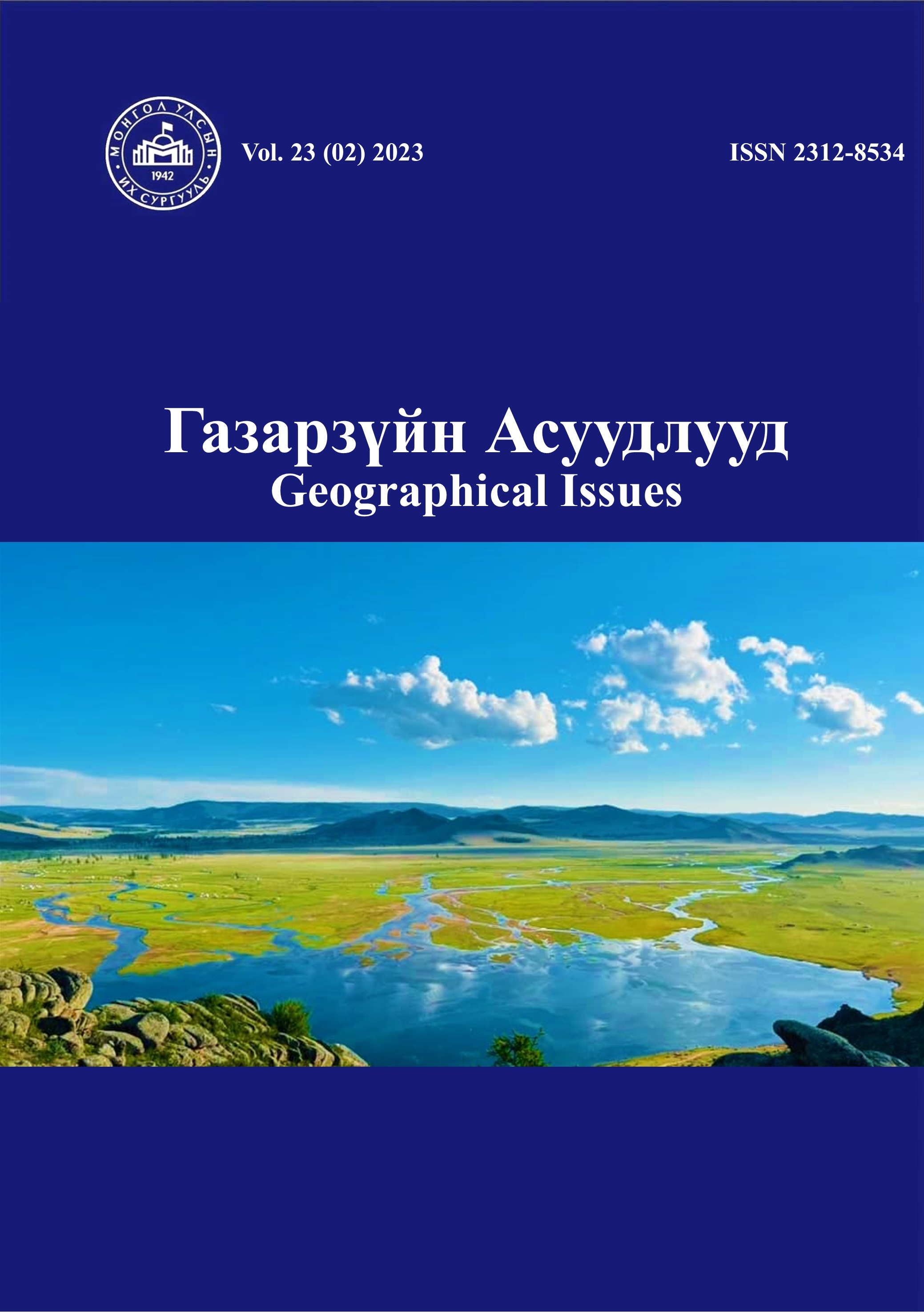Methodology for calculating scale coefficients in UTM reflectance
UTM тусгалд масштабын итгэлцүүрийг тооцох аргачлал
Keywords:
Geodesy, WGS-84 rotation ellipsoid, UTM reflection, reduction problem, linear distortion, scale factorAbstract
According to Resolution No. 267 of the Government of Mongolia dated July 5, 2022, the ITRF2020 system of the international geodetic offset, the Baltic Sea system in the elevation network, and the global transverse mercator "UTM" in the map are reflected in the geodetic measurement and mapping work carried out throughout the territory of Mongolia are used respectively. Geodetic measurements and large-scale topographic mapping necessary for urban development, mining exploitation, mineral resource estimation, engineering construction projects, and calculations are carried out in the equiangular plane substitution system. In this system, there is no clear methodology and instructions on how to use the scaling factor for geodetic measurement, which has a negative impact on the quality of geodetic production. For example, since 2009, the standard that uses the value of 0.9996, which is the scale coefficient on the center of the axis, which does not differ anywhere, regardless of the location of the measurement, is incorrect. Therefore, it is advisable to use a scale coefficient that correctly calculates the distortion that occurs when a certain part of the ellipsoid of rotation is mapped to a plane using the "UTM'' reflection of the global transverse mercator in map measurements. The conversion of B and L values of the geodetic fixed points on the geodetic fixed points by using the conversion program for each point does not correspond to the theoretical problems of higher geodesy. After improving the density of the national geodetic network and equalizing the "UTM'' equiangular variables of the geodetic position network throughout the territory of Mongolia, it can be assumed that the geodetic measurement is carried out on a plane and the value of the scale coefficient can be used. As a result, the problem of discrepancies in checking the position network established by GNSS technology with an electronic tacheometer will disappear, and the topographic map will contain accurate information that meets the quality requirements of any design work.
Downloads
Downloads
Published
How to Cite
Issue
Section
License

This work is licensed under a Creative Commons Attribution-NonCommercial-ShareAlike 4.0 International License.






